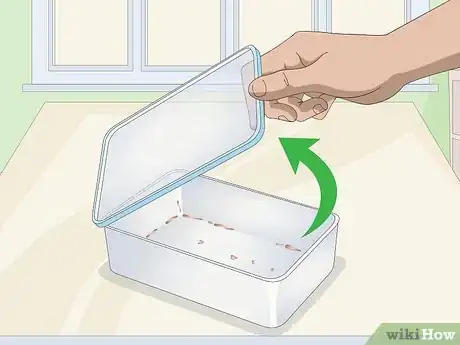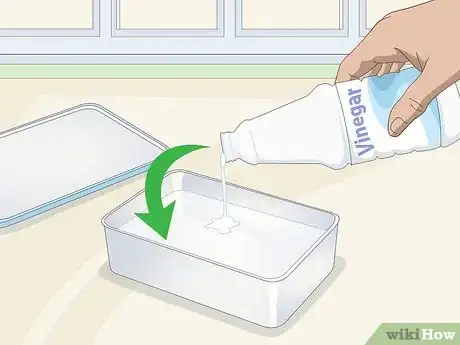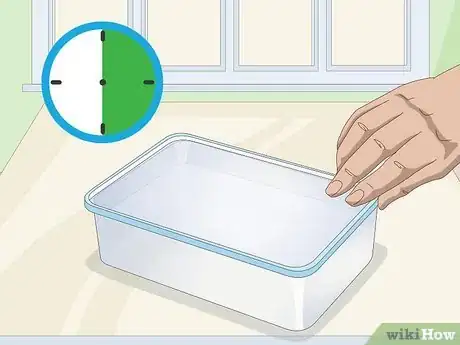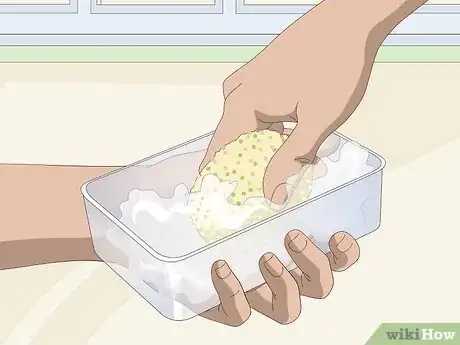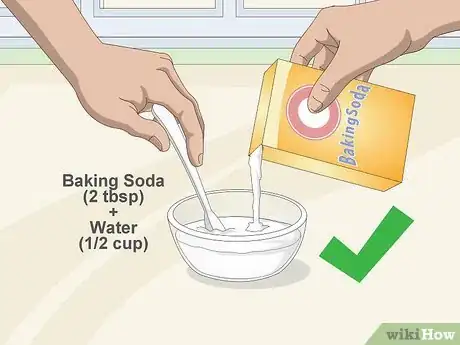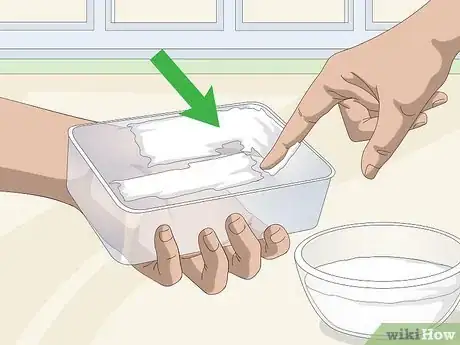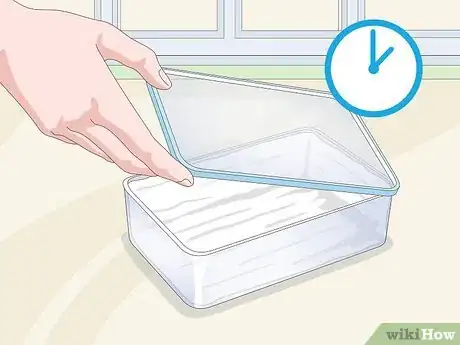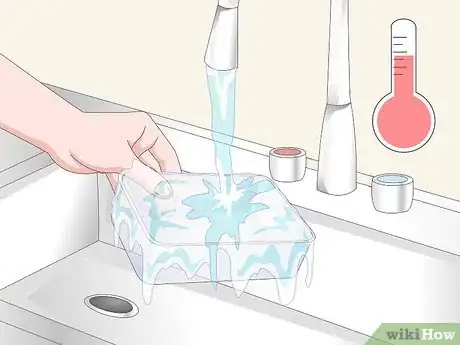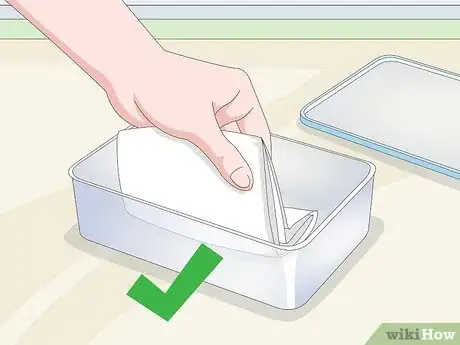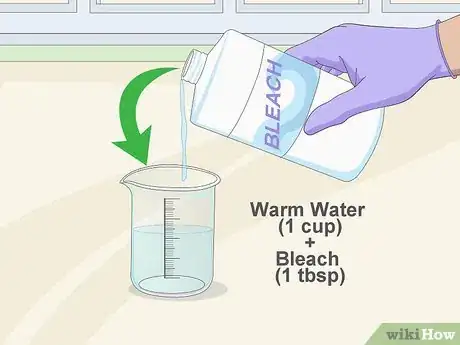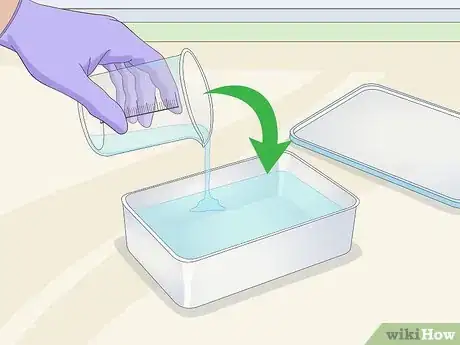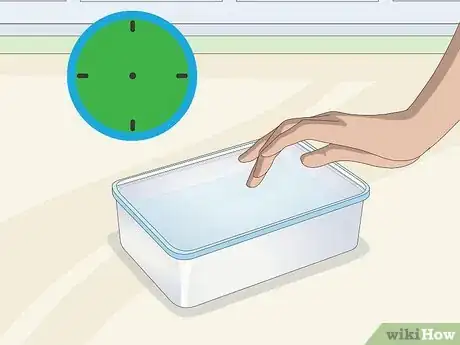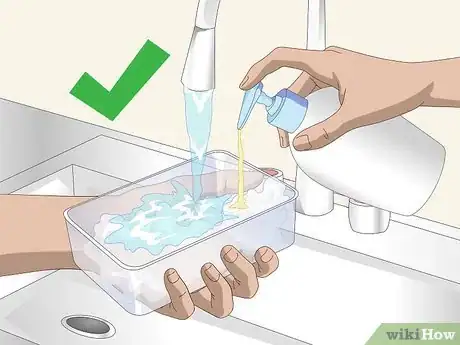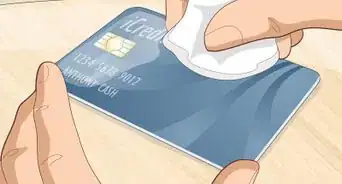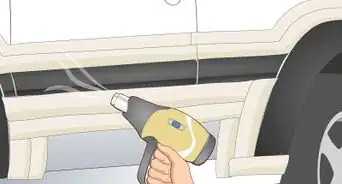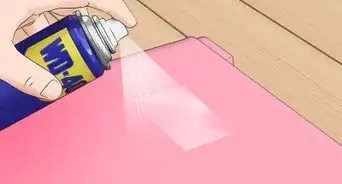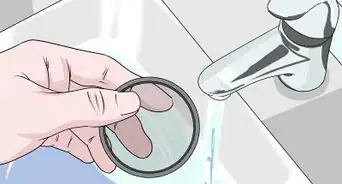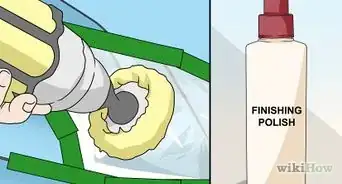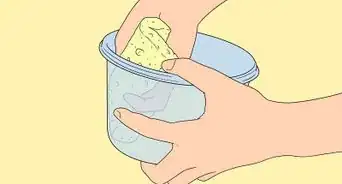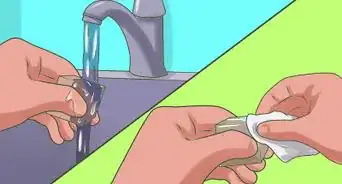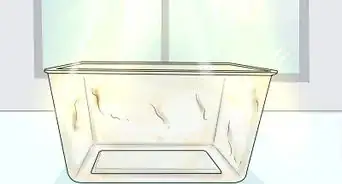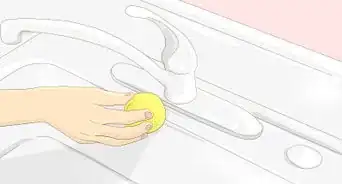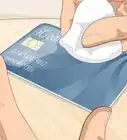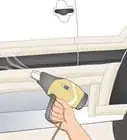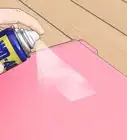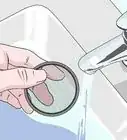This article was co-authored by Chris Willatt. Chris Willatt is the owner and founder of Alpine Maids, a cleaning agency in Denver, Colorado started in 2015. Alpine Maids has received Angie's List Super Service Award for three years in a row since 2016 and has been awarded Colorado's "Top Rated Local House Cleaning" Award in 2018.
There are 11 references cited in this article, which can be found at the bottom of the page.
This article has been viewed 48,874 times.
When it comes to keeping your leftovers fresh, plastic food containers are a lifesaver. If you’ve ever attempted to clean one after it’s been sitting in the refrigerator for a while, however, you know how hard it can be to completely eliminate lingering odors and unsightly stains that result from items like grease and pasta sauce. But before you throw them in the trash, try salvaging them using one of the simple cleaning solutions outlined here. More often than not, even the most gnarly piece of Tupperware will sparkle after it’s been treated with a normal household item like baking soda, vinegar or bleach.
Steps
Using Vinegar
-
1Remove the lid from the container. After you pop it open, check to make sure there are no remnants of food left inside. Give the container a quick preliminary rinse with hot water. Drain and shake out the excess water and place the container on the kitchen counter.
- If there’s any dried or sticky residue inside the container, it may help to wipe it out with a paper towel before you begin cleaning.
-
2Fill the container with vinegar. For best results, use pure distilled white vinegar. If most of the stains are concentrate around the bottom, you’ll only need to add in an inch or two; if they reach up the sides, fill it to the top. Place the lid back on the container to keep the vinegar from spilling.[1]
- Vinegar is strong enough to make an effective cleaner and disinfectant, but not so strong that it needs to be cut it with water.
- If you don’t happen to have any vinegar handy, try using a little diluted rubbing alcohol or hand sanitizer. The alcohol in these products will produce an effect similar to the vinegar.[2]
Advertisement -
3Let the vinegar soak for 30 minutes. As it soaks, the acidity of the vinegar will help break down any discoloration present while neutralizing persistent odors. It will also help clear away hard water deposits from previous washings. For heavier messes, you can leave the vinegar in the container for an hour or longer before cleaning it out by hand.[3]
- Vinegar is naturally antimicrobial, which makes it useful for killing the bacteria that’s had time to begin growing on old food.
- Adding a squeeze of fresh lemon juice can help brighten dull, discolored plastic and leave it smelling more pleasant.[4]
-
4Scrub the container vigorously. Once half an hour has elapsed, lift the lid and pour out the vinegar. Then, squirt a few drops of liquid dish detergent into the container and go over the inside using a kitchen sponge or stiff-bristled nylon dish brush. The rough surface of the scrubber should be enough to deal with any remaining stains.[5]
- You may not be able to erase certain stains (like the infamous tomato sauce) entirely. Once these have set up in the plastic, it can be nearly impossible to get them out.[6]
- Avoid scouring the container with anything more abrasive than a sponge. A device like steel wool or pumice stone may leave behind scratches in the plastic.
Using Baking Soda
-
1Make a paste from baking soda and water. Sprinkle two tablespoons of baking soda into half a cup (120ml) of warm water. Stir the two ingredients together with a spoon until they’re about the same consistency as peanut butter. If the paste seems too thin, add a little more baking soda. If it’s too thick, stir in another half ounce of water at a time until you achieve the desired texture.[7]
- Baking soda is prized for its ability to cut through stains and absorb unwanted odors. It’s also slightly astringent, which will come in handy when it comes time to scrub the container.[8]
- It may be necessary to mix a bigger batch of baking soda paste if you’re trying to clean multiple (or especially large) containers.
-
2Spread the paste over the inside of the container. Coat the walls of the container with a thin layer of the baking soda paste. Scoop whatever is left into the bottom. Try to use all of the mixture.[9]
- The paste will have an easier time sticking if the inside of the container is completely dry.
-
3Allow the paste to work overnight. Put the lid on the container and find an out of the way place to leave it. As it sits, the combination of baking soda and water will begin chipping away at messes that have taken hold in the plastic without the need for scouring or scrubbing. In the morning, you can come back and observe the results of the baking soda.[10]
- Make sure you give the paste at least an hour or two to take effect.
-
4Rinse with hot water. Remove the lid and clear the container, using the corner of a washcloth to scrape out the rest of the baking soda. The container should now be stain and odor-free. If you want, you can go one step further and wash it out with soapy water.[11]
- Keep rinsing the container until the water runs clear.[12]
- Use baking soda periodically to restore old and heavily-used containers.
-
5Dry the container completely. After cleaning, drain all water from the container and wipe it down inside and out with an absorbent towel. You can also simply leave it sitting with the lid off and allow it to air dry. Whichever method you choose, the lid should stay off until all moisture has evaporated from inside.[13]
- Replacing the lid on a plastic container while it's still wet can cause mold and mildew to develop.
Using Chlorine Bleach
-
1Mix together a small amount of bleach and warm water. Run a cup (240ml) of water into a glass measuring cup, then funnel in one tablespoon of bleach. Whisk the liquids together lightly. For your own safety, be sure to wear rubber gloves any time you’re working with bleach.[14]
- Chlorine bleach is a highly-toxic chemical that can be extremely harmful if it’s accidentally ingested or comes into contact with your skin.[15]
- Due to the hazards that bleach presents, this solution is best reserved as a last ditch effort for when other cleaning methods are unable to cut it.
-
2Pour the bleach solution into the container. Do this carefully to avoid spills or splashes. Once you’ve got the bleach inside, close the lid and give the container a gentle shake. Then, set it aside and allow the stain-fighting chemicals to begin working their magic.
- Leave the bleach-filled container somewhere that it won’t be mistaken for something else.
- Never mix bleach with any other cleaners, chemical or natural.[16]
-
3Let the container soak for 1-2 hours. Bleach is exceptionally potent, so this will likely be all that’s needed to do away with even the worst odors and discoloration. Avoid moving or otherwise handling the container unnecessarily while there's bleach inside.[17]
- Set a timer so that you don’t forget to empty the container. If you leave the bleach in there for too long, it can eventually eat away at the plastic.
- If the lid of the container is also stained, you can place it in the sink and pour a small amount of the bleach solution over it.[18]
-
4Wash out the container thoroughly. Pour the bleach down the drain and rinse out the container with fresh, clean water. Squeeze in some dish soap and work it around with a soft kitchen sponge or washcloth until you’re satisfied that no oily residue or bleach remains. When you’re finished, your plastic containers should sparkle like new![19]
- Most plastics are somewhat porous. For this reason, it’s important that you wash the container as usual after treating it with bleach to make sure that none of the chemical remains.[20]
- Continue washing the container until you can no longer detect the smell of bleach.
Expert Q&A
-
QuestionHow do you get stains out of plastic containers?
 Chris WillattChris Willatt is the owner and founder of Alpine Maids, a cleaning agency in Denver, Colorado started in 2015. Alpine Maids has received Angie's List Super Service Award for three years in a row since 2016 and has been awarded Colorado's "Top Rated Local House Cleaning" Award in 2018.
Chris WillattChris Willatt is the owner and founder of Alpine Maids, a cleaning agency in Denver, Colorado started in 2015. Alpine Maids has received Angie's List Super Service Award for three years in a row since 2016 and has been awarded Colorado's "Top Rated Local House Cleaning" Award in 2018.
House Cleaning Professional Soap and water are the safest for plastic. Vinegar works great for tough stains, but make sure to dilute it with water for easier ones so that the plastic doesn't wear down. Acidic products can affect the color of plastic and even "eat" it away slowly if you use them a lot.
Soap and water are the safest for plastic. Vinegar works great for tough stains, but make sure to dilute it with water for easier ones so that the plastic doesn't wear down. Acidic products can affect the color of plastic and even "eat" it away slowly if you use them a lot.
Warnings
- Don’t microwave your leftovers in the plastic storage container. This will infuse stains directly into the plastic, essentially making them permanent. Instead, transfer the food to a separate dish before heating.⧼thumbs_response⧽
- Always work in a well-ventilated space when using bleach. If you experience any burning, eye-watering or dizziness, leave the room immediately.⧼thumbs_response⧽
Things You'll Need
- Distilled white vinegar
- Baking soda
- Chlorine bleach
- Water
- Liquid dish soap
- Abrasive kitchen sponge
- Stiff-bristled nylon brush
- Measuring cup
- Newspaper (optional)
References
- ↑ http://cleanmyspace.com/how-to-clean-plastic-containers/
- ↑ https://foodal.com/knowledge/cleaning/11-ways-remove-stains-plastic/
- ↑ https://foodal.com/knowledge/cleaning/11-ways-remove-stains-plastic/
- ↑ https://foodal.com/knowledge/cleaning/natural-cleaning-power-lemon/
- ↑ http://www.momables.com/how-to-remove-stains-from-plastic-containers/
- ↑ https://foodal.com/knowledge/cleaning/11-ways-remove-stains-plastic/
- ↑ http://www.huffingtonpost.com/chris-barnes/how-to-clean-tomato-sauce_b_1521201.html
- ↑ https://www.houselogic.com/organize-maintain/cleaning-decluttering/natural-odor-eliminator/
- ↑ https://www.thekitchn.com/6-ways-to-clean-smelly-plastic-containers-without-harsh-chemicals-186220
- ↑ http://cleanmyspace.com/how-to-clean-plastic-containers/
- ↑ https://www.thekitchn.com/6-ways-to-clean-smelly-plastic-containers-without-harsh-chemicals-186220
- ↑ https://food52.com/blog/11488-how-to-get-smells-and-stains-out-of-tupperware
- ↑ http://www.goodhousekeeping.com/home/cleaning/tips/a19487/how-to-clean-plastic-containers/
- ↑ http://www.goodhousekeeping.com/home/cleaning/tips/a19487/how-to-clean-plastic-containers/
- ↑ http://www.home-ec101.com/how-to-use-bleach-safely/
- ↑ http://www.doh.wa.gov/YouandYourFamily/HealthyHome/Contaminants/BleachMixingDangers
- ↑ http://www.huffingtonpost.com/chris-barnes/how-to-clean-tomato-sauce_b_1521201.html
- ↑ http://www.goodhousekeeping.com/home/cleaning/tips/a19487/how-to-clean-plastic-containers/
- ↑ https://foodal.com/knowledge/cleaning/11-ways-remove-stains-plastic/
- ↑ http://www.momables.com/how-to-remove-stains-from-plastic-containers/
About This Article
To clean a plastic container, start by giving it a rinse with hot water to remove any food remnants. Then, fill the container with an inch or 2 of vinegar if the stains are on the bottom of the container or to the top if the stains reach up the sides. Place the lid on the container and leave it for 30 minutes, which gives the vinegar time to break down stains and get rid of odors. After half an hour, pour the vinegar out, scrub the container with a kitchen sponge and a few drops of dish detergent before leaving it to dry. For tips on using baking soda or bleach to clean containers, keep reading!
